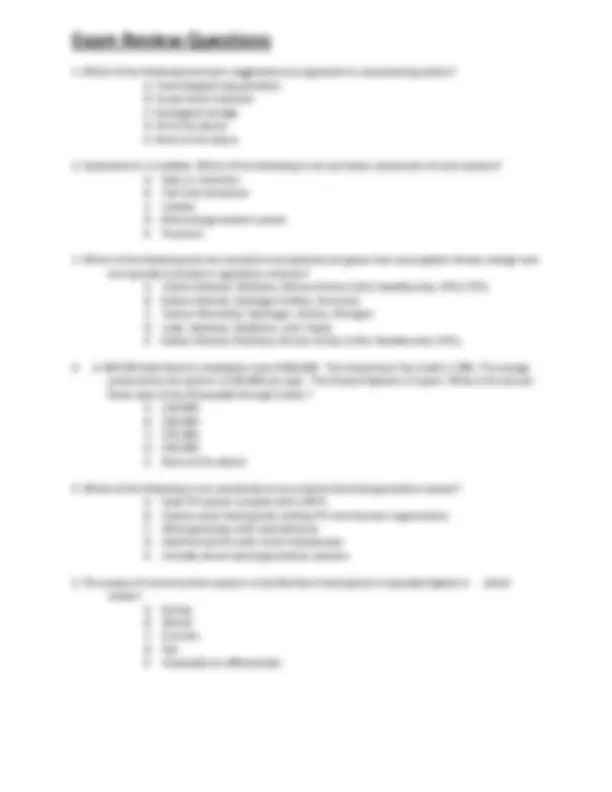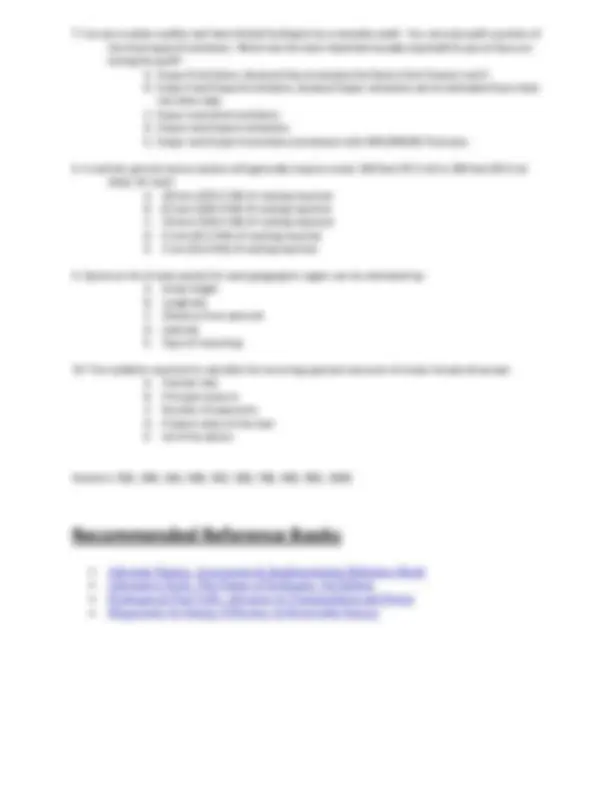




Study with the several resources on Docsity

Earn points by helping other students or get them with a premium plan


Prepare for your exams
Study with the several resources on Docsity

Earn points to download
Earn points by helping other students or get them with a premium plan
Community
Ask the community for help and clear up your study doubts
Discover the best universities in your country according to Docsity users
Free resources
Download our free guides on studying techniques, anxiety management strategies, and thesis advice from Docsity tutors
Renewable Energy Professional (REP) Study Guide and Sample Questions. The REP Certification exam is a four-hour open book exam. The exam questions are based ...
Typology: Slides
1 / 4

This page cannot be seen from the preview
Don't miss anything!



The REP Certification exam is a four-hour open book exam. The exam questions are based on the topics listed below, as a result of diversity of background and experience of Renewable Energy professionals. You may bring a hand-held calculator to the exam as the REP exam does not allow computers, tablets, or cell phones to be used during the test. It is highly recommended that you review the complete Study Guide and answer the Exam Review questions included in this document to determine your readiness for the exam.
Introduction to Alternative Energy Environmental Impacts - a Driver for Using Alternative Energy Alternative Energy and Carbon Reduction Solar Energy o Hot water heating (domestic hot water and pool heating) o Solar heating and air conditioning o Solar electric generation o Case studies Wind Energy o Design considerations such as intermittency and penetration limits o Small scale wind turbine generation (WTG) systems o Onshore wind energy technologies o Offshore wind farms o Economics and feasibility o Case studies of wind power projects Hydropower o Large hydro systems o Mini-turbine technologies o Ocean generation systems
o River and stream current generation o Case examples Geothermal Energy o Types of geothermal energy resources and development approaches o Electrical generation o Earth tubes applications for low temperature heating and dehumidification o Geothermal heat pump applications o Case examples Waste-to-Energy Systems o Wastes as an energy source o Differences between thermal and non-thermal technologies o Biological mechanical treatment (BMT) o Biomass energy o Waste fuels and their uses o Landfill gas and gas turbines o Plasma-arc gasification processes (PGP) o Case studies of waste-to-energy plants Fuel Cells - An Example of Hydrogen Applications o How fuel cells work o Fuel cell designs (proton exchange, oxygen-ion, proton-membrane) o Differences between low, intermediate and high temperature systems o Applications of fuel cell technologies Hybrid Alternative Energy Systems o Combining alternative energy components o Uses for hybrid energy systems o Solar and wind power combinations o Pumped-storage, wind generated hydroelectricity o Applications for hybrid systems Creative Energy Storage Applications Alternative Energy Strategies for Buildings o Using alternative energy for green construction o Site solutions to optimize alternative energy potential o LEED and Energy Star buildings o Integrating multiple alternative energy technologies in buildings o Demand-side conservation approaches o Net zero energy and net-positive energy construction o Carbon neutral construction o Case studies Transportation Systems Governmental Alternative Energy Programs Financial Approaches and Incentives for Alternative Energy The Future of Alternative Energy